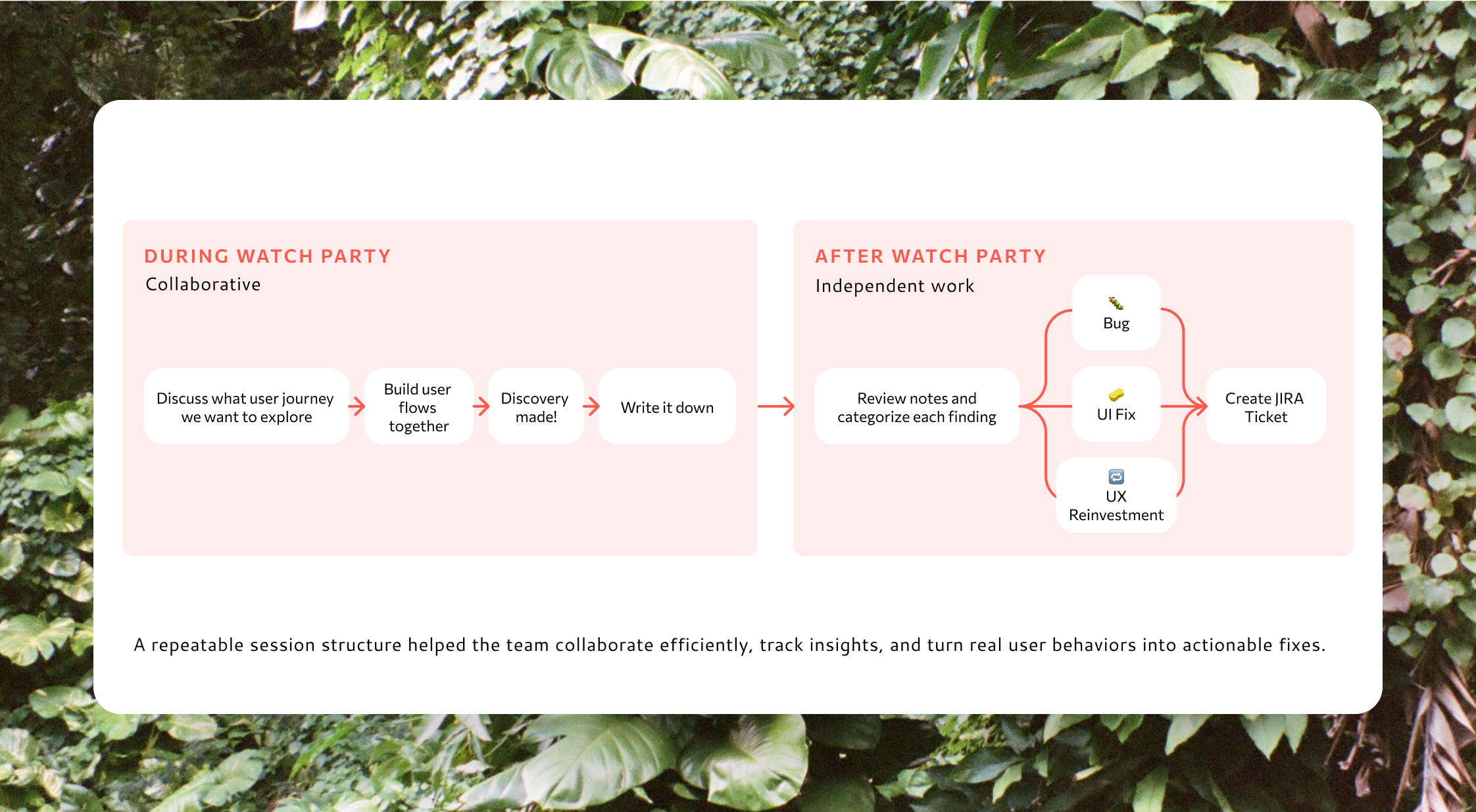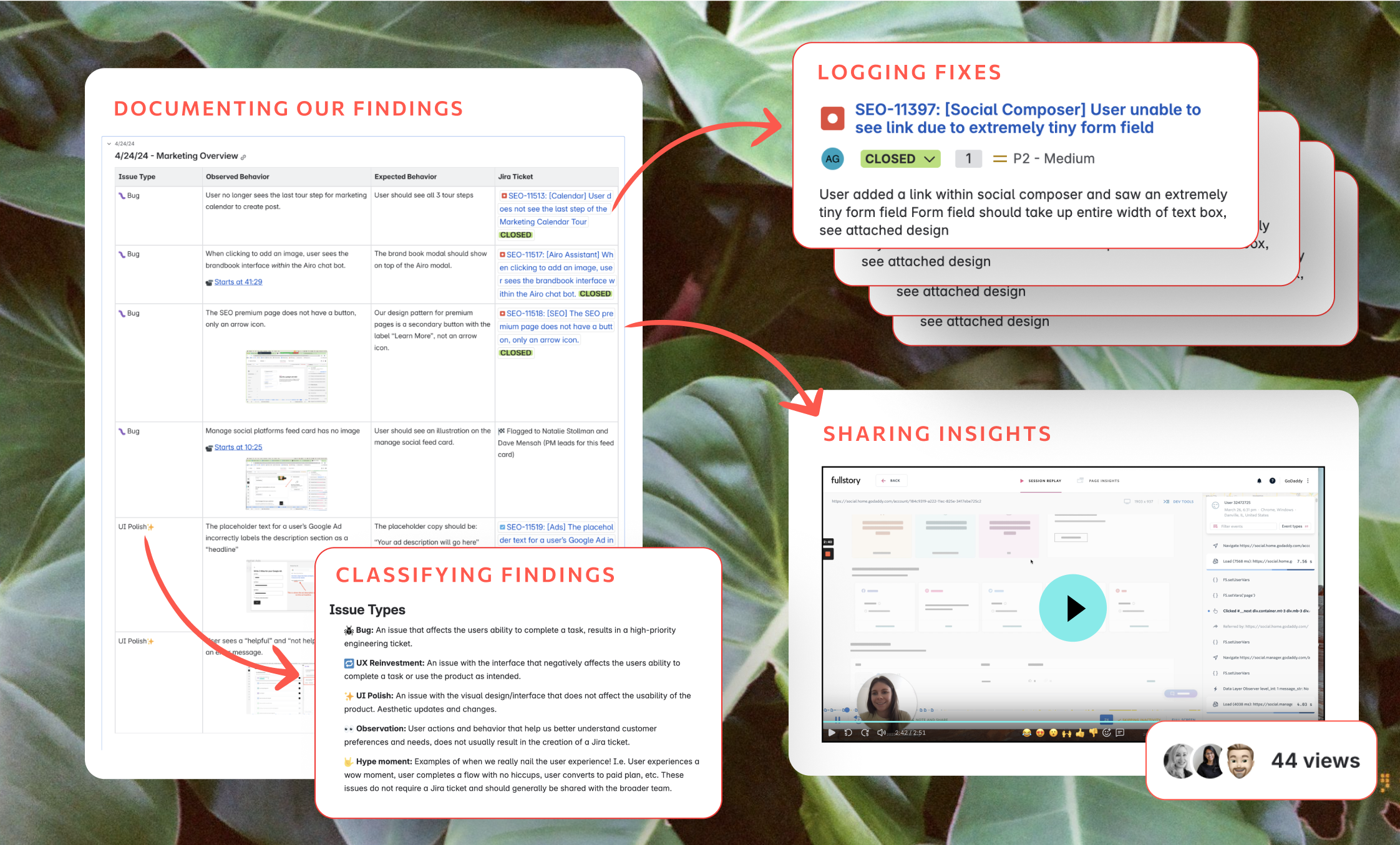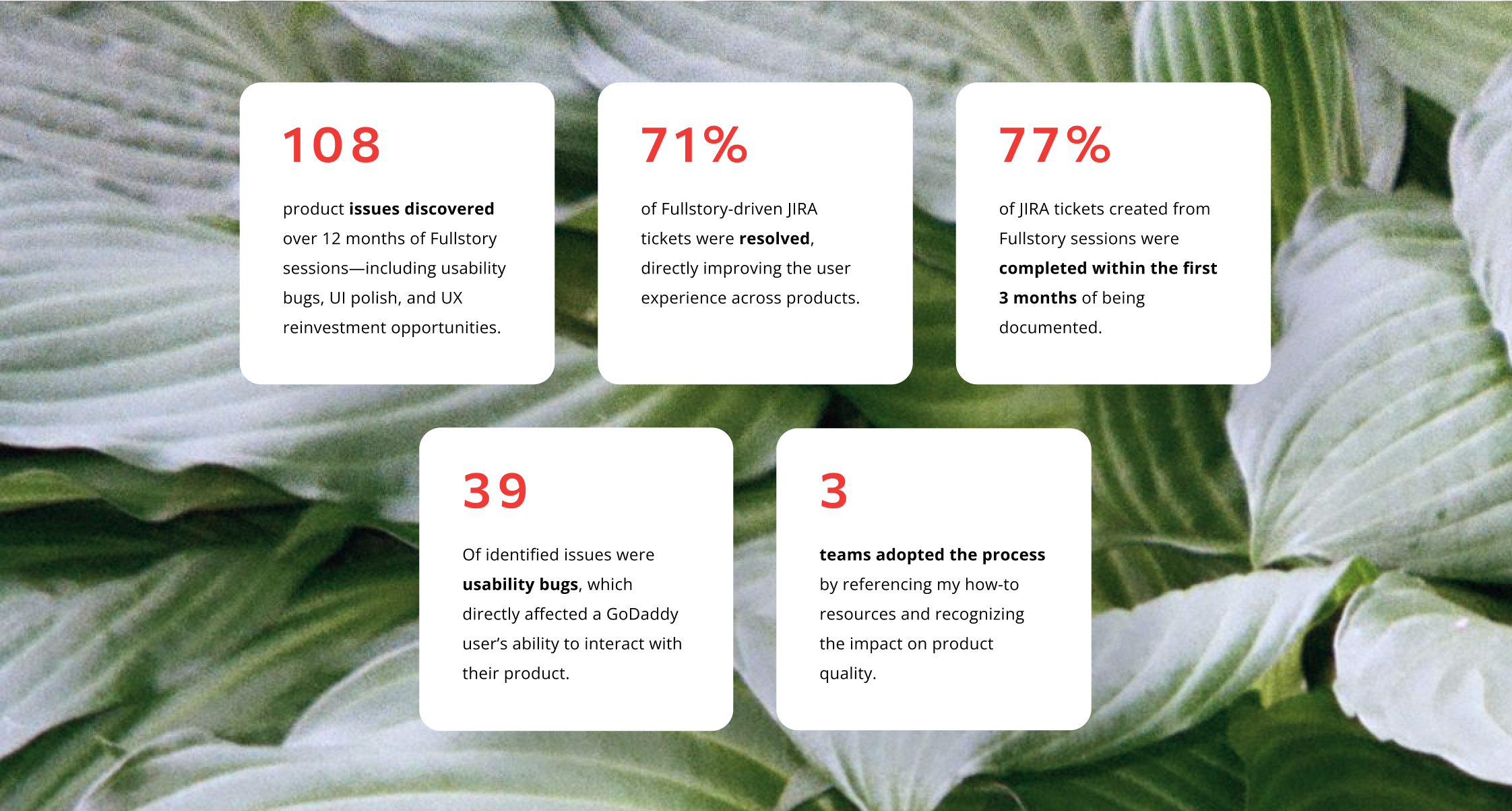Driving Change with Fullstory
Leveraging user behavior data to improve usability and drive cross-functional collaboration.
 What I did
What I did

I spearheaded the adoption of Fullstory within my team as a tool to surface experience gaps and improve product usability through real user behavior insights. To drive engagement and understanding, I hosted bi-weekly 'watch parties' that educated the team on GoDaddy's newest data reporting tool, fostered stronger cross-functional collaboration with my product and engineering partners, and championed empathy across our product development process.
Stepping beyond the typical scope of my role, I led data interpretation and metric reporting efforts, increasing our team's visibility into product performance and helping them see beyond metrics and into the real experiences of customers. Insights captured from these sessions directly informed design decisions, resulting in targeted fixes and UI refinements that made the experience smoother and more intuitive for our users.
 Tools I used
Tools I used

FullStory
Figma
Confluence
WHAT IS FULLSTORY?
Fullstory is a digital experience intelligence platform that helps businesses understand how users interact with their websites and applications. It provides tools for analyzing user behavior, identifying friction points, and optimizing digital experiences. Fullstory essentially captures and replays user sessions, allowing teams to see exactly what users are doing and where they might be encountering issues.
 How it worked
How it worked

Each 45-minute session followed a collaborative, repeatable flow. I started with a quick team check-in on which user journey to explore, then we built a FullStory funnel together to surface relevant sessions. As a team, we watched real user behavior, noted discoveries in real time, and categorized them after the session. The timeline below shows how this structure kept things focused, engaging, and actionable.

 Leading the Sessions
Leading the Sessions

During the live sessions, I shared my screen and encouraged an open, conversational atmosphere—more like watching a show together than a formal review. I also created short, easy-to-follow how-to videos so teammates could confidently navigate FullStory on their own, even after the sessions ended.
Afterward, I documented and categorized the insights we uncovered and partnered with stakeholders, both on my own team and across other teams, to coordinate fixes. These efforts led to improvements across multiple product experiences and helped streamline GoDaddy's design language and overall user journey.

 Company Impact
Company Impact

The process I led didn't just reveal problems, it created a clear, repeatable ways to solve them. By facilitating a shared space to observe user behavior, document insights, and design solutions, our team improved both the usability and visual polish of our product. My approachable leadership style helped make the sessions engaging, giving a voice to the user while building lasting team engagement and cross-functional buy-in. I also designed the process to scale, using lightweight documentation, how-to resources, and a repeatable session format that made it easy for other teams to adopt on their own.

 Refining the Process
Refining the Process

Over time, the sessions increased the team's confidence and proficiency with Fullstory, so we no longer needed to use create user journey flows together (1). As we observed recurring user behaviors, ideas for how we might improve or experiment on the experience came up organically, leading me to create a dedicated category for experiment ideas and log them in a separate document to help inform future A/B tests (2). We also identified patterns that couldn't be addressed by simple code changes and required deeper UX reinvestment. For those, I assigned larger design tickets to myself instead of routing them through the standard engineering bug process (3).
